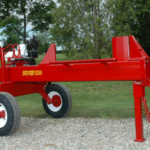In the realm of home improvement, selecting the right roof ventilator is crucial for maintaining optimal airflow and temperature regulation within your living space. With a plethora of options available in the market, it’s essential to understand the key factors to consider when making this decision. In this comprehensive guide, we’ll delve into the nuances of selecting the perfect roof ventilator tailored to your specific needs.
the Importance of Roof Ventilation
The Role of Roof Ventilators in Home Comfort
Roof ventilators play a pivotal role in ensuring proper air circulation and ventilation within your home. By expelling hot air during the summer months and preventing moisture buildup in colder seasons, they contribute to maintaining a comfortable indoor environment year-round.
Benefits of Proper Roof Ventilation
Proper roof ventilation offers a myriad of benefits, including:
- Enhanced Energy Efficiency: By reducing the strain on your HVAC system, a well-ventilated roof can lead to lower energy bills.
- Prevention of Moisture Damage: Adequate ventilation helps prevent moisture buildup, which can lead to mold growth and structural damage.
- Extended Roof Lifespan: By minimizing heat buildup in the attic, proper ventilation can prolong the lifespan of your roof shingles.
the Right Roof Ventilator for Your Needs
Understanding Your Ventilation Requirements
Before diving into the selection process, it’s essential to assess your specific ventilation needs. Consider factors such as the size of your attic, climate conditions, and existing ventilation infrastructure.
Types of Roof Ventilators
Roof ventilators come in various types, each with its unique features and benefits:
- Ridge Vents: Installed along the peak of the roof, ridge vents offer continuous ventilation and blend seamlessly with the roofline.
- Static Vents: These non-mechanical vents utilize natural airflow to expel hot air from the attic.
- Turbine Vents: Powered by wind energy, turbine vents are effective in removing hot air and moisture from the attic.
- Solar-Powered Vents: Ideal for eco-conscious homeowners, solar-powered vents harness solar energy to power ventilation fans.
Factors to Consider When Choosing a Roof Ventilator
When selecting a roof ventilator, consider the following factors:
- Ventilation Capacity: Ensure that the ventilator’s capacity aligns with the size of your attic space for optimal performance.
- Durability: Choose high-quality materials and reputable brands to ensure longevity and durability.
- Installation Requirements: Consider the ease of installation and compatibility with your existing roof structure.
- Energy Efficiency: Opt for energy-efficient models to minimize operating costs and environmental impact.
- Aesthetic Appeal: Select a ventilator that complements the architectural style of your home for a cohesive look.
Conclusion
Selecting the right roof ventilator is paramount for maintaining a comfortable and healthy indoor environment. By considering factors such as ventilation requirements, types of ventilators, and common FAQs, you can make an informed decision that enhances the overall quality of your living space.
FAQs
Are roof ventilators necessary for every home?
Yes, roof ventilators are essential for maintaining proper airflow and preventing moisture buildup in attics, regardless of the home’s size or location.
How do I determine the right size of roof ventilator for my attic?
The size of the roof ventilator should be proportional to the attic’s square footage. Consult with a roofing professional to assess your specific ventilation needs.
Can I install a roof ventilator myself, or do I need professional assistance?
While some roof ventilators are designed for DIY installation, it’s advisable to seek professional assistance, especially if you’re unfamiliar with roofing systems.
How often should roof ventilators be inspected and maintained?
Roof ventilators should be inspected annually to ensure proper functionality and address any potential issues promptly. Routine maintenance, such as cleaning debris and checking for signs of damage, is also recommended.
Do roof ventilators contribute to noise pollution?
Modern roof ventilators are designed to operate quietly, minimizing noise pollution while effectively ventilating the attic space.
Can roof ventilators help improve indoor air quality?
Yes, roof ventilators play a crucial role in enhancing indoor air quality by expelling stale air and moisture, thereby reducing the risk of mold and allergen accumulation.







